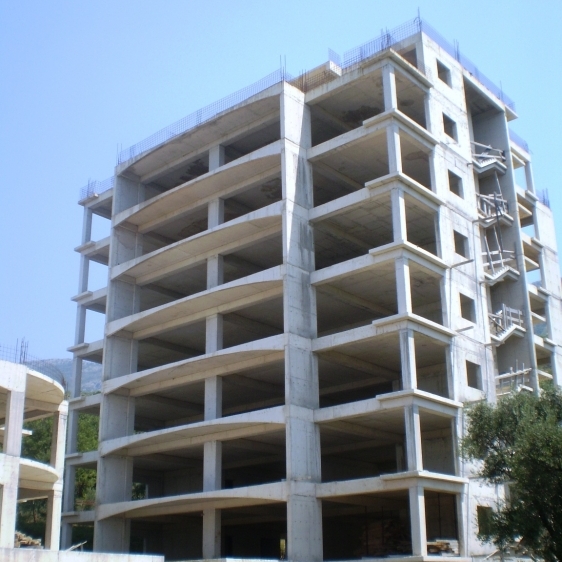 (Podgorica, 9 September 2011) – The development and adoption of the spatial plan for the Mirište parcel – effectively legalizing buildings erected on Branislav Mičunović’s property – are the result of coordinated activities by the Municipality of Budva and the responsible Ministry. These developments have no foundation in the law or in procedures that the Ministry of Sustainable Development is citing to justify its retroactive measures.
(Podgorica, 9 September 2011) – The development and adoption of the spatial plan for the Mirište parcel – effectively legalizing buildings erected on Branislav Mičunović’s property – are the result of coordinated activities by the Municipality of Budva and the responsible Ministry. These developments have no foundation in the law or in procedures that the Ministry of Sustainable Development is citing to justify its retroactive measures.
 There is no existing regulation that could hide the clear responsibility of Gvozdenović, Sekulić and Kuljača for the course of events in the “Mirište” case. The Spatial Plan of the Budva Municipality prescribes that tourist accommodations of up to 50 beds can be built on this location in smaller buildings integrated with the surrounding green space. In direct contradiction of these regulations, the recently adopted Mirište plan foresees the erection of two buildings, including one that is projected to stand 8-stories tall (already built illegally!).
There is no existing regulation that could hide the clear responsibility of Gvozdenović, Sekulić and Kuljača for the course of events in the “Mirište” case. The Spatial Plan of the Budva Municipality prescribes that tourist accommodations of up to 50 beds can be built on this location in smaller buildings integrated with the surrounding green space. In direct contradiction of these regulations, the recently adopted Mirište plan foresees the erection of two buildings, including one that is projected to stand 8-stories tall (already built illegally!).
Furthermore, even the projected 50 beds that are supposed to be found on the Mičunović’s 1,800 m2 property, contravene legal standards regulating hotel capacities. According to the ‘Rule Book on the Contents and Form of Planning Documents’ and the ‘Rule Book on Classifications,’ the average room size per bed for a hotel ranges from 60m2 for a three-star hotel, to 100m2 for a five-star hotel.
 Additionally, the established regulations also require that 60m2 – 100m2 of green space be secured per hotel guest (depending on the rating of the hotel). A simple calculation clearly reveals that on Mičunović’s parcel, if all the aforementioned regulations were followed, one could only manage to build a three star complex of some 1,200 m2 that could house 20 beds. Instead of this, the Ministry approved a building four times the allotted size – totaling some 5,000 m2 – as already erected on Mičunović’s parcel.
Additionally, the established regulations also require that 60m2 – 100m2 of green space be secured per hotel guest (depending on the rating of the hotel). A simple calculation clearly reveals that on Mičunović’s parcel, if all the aforementioned regulations were followed, one could only manage to build a three star complex of some 1,200 m2 that could house 20 beds. Instead of this, the Ministry approved a building four times the allotted size – totaling some 5,000 m2 – as already erected on Mičunović’s parcel.
These are facts that cannot be hidden through the demagogic statements that are now coming from the cabinet of the serving Minister Sekulić. It is absolutely clear that the amendment’s to Budva’s Spatial Plan and the adoption of a plan regulating the Mirište property are part of a concerted plan to protect Mičunović’s interests instead of respecting existing laws.
The former Minister of Urban Planning, Branimir Gvozdenović, also contributed to this outcome allowing the investor to continue his construction projects and finish erecting an 8-story building. Unfortunately, once again, we have yet to hear an explanation from Gvozdenović as to how it was possible to illegally erect an 8-story building without his Ministry taking any action to prevent such construction work. It is clear that Gvozdenović’s successors are also not considering demolishing the illegally erected buildings on this property.
Sadly, this case represents the results of a well-established practice in Montenegro over the last ten years that has resulted in the legalization of millions of square meters of illegally built accommodations along the coast. It illustrates the degree to which those in the Ministry are willing to ignore existing laws and regulations in so far as such behavior would be in the interest of powerful individuals.
The Mirište case illustrates that Sekulić feels comfortable filling the shoes of his predecessor Gvozdenović, continuing the modus operandi that he established in the urban planning sector. The struggle against corruption and organized crime cannot be effectively led in so far as government institutions responsible for spatial planning are presided over by cadres that lack the will to simply implement existing laws and regulations.



